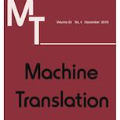This paper describes the acquisition, preprocessing, segmentation, and alignment of an Amharic-English parallel corpus. It will be helpful for machine translation of a low-resource language, Amharic. We freely released the corpus for research purposes. Furthermore, we developed baseline statistical and neural machine translation systems; we trained statistical and neural machine translation models using the corpus. In the experiments, we also used a large monolingual corpus for the language model of statistical machine translation and back-translation of neural machine translation. In the automatic evaluation, neural machine translation models outperform statistical machine translation models by approximately six to seven Bilingual Evaluation Understudy (BLEU) points. Besides, among the neural machine translation models, the subword models outperform the word-based models by three to four BLEU points. Moreover, two other relevant automatic evaluation metrics, Translation Edit Rate on Character Level and Better Evaluation as Ranking, reflect corresponding differences among the trained models.
翻译:本文描述了阿姆哈拉-英语平行材料的获取、预处理、分解和校正,将有助于低资源语言阿姆哈拉语的机器翻译。我们为研究目的自由发布该材料。此外,我们开发了基线统计和神经机器翻译系统;我们用该材料培训了统计和神经机器翻译模型。在实验中,我们还对统计机器翻译和神经机器翻译的回译语言模型使用大量单语材料。在自动评估中,神经机器翻译模型比统计机器翻译模型多出大约六至七个双语评估基础研究点。此外,在神经机器翻译模型中,子字型模型比基于字型模型多出三至四个BLEU点。此外,另外两个相关的自动评价指标,即翻译品位率和更好的评价,反映了经过培训的模型之间的相应差异。




